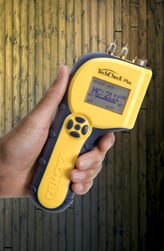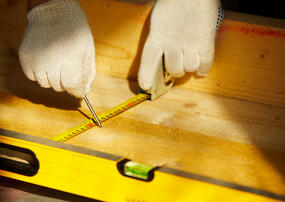 Sometimes, it’s important for flooring contractors, restoration specialists, and other professionals to thoroughly document the moisture readings that they take for future reference. As a practice, recording moisture measurements is a great way to demonstrate that you are operating with all of the information that you need to make good decisions, and even resolve disputes before they begin.
Sometimes, it’s important for flooring contractors, restoration specialists, and other professionals to thoroughly document the moisture readings that they take for future reference. As a practice, recording moisture measurements is a great way to demonstrate that you are operating with all of the information that you need to make good decisions, and even resolve disputes before they begin.
Even when documentation isn’t necessary for business reasons, keeping track is still a good idea. For example, monitoring how the moisture conditions in an object change over time can still be useful for learning to anticipate how moisture in similar objects may change over time in similar situations.
The question here isn’t “should I record my moisture readings,” but “how can I record my moisture readings efficiently?”
Back in the day, this usually entailed writing the number down by hand in a journal, which can be difficult when you’re working in cramped, dark areas where it’s hard to see or write comfortably. However, there is a better way to handle the recording of important readings for a job: using a moisture meter that stores readings for later use.
Benefits of Storing Readings on the Meter and Creating Reports
With stored readings on a moisture meter, you can recall your latest readings with ease whenever you need to double check your readings. The specific number of readings that a moisture meter can hold will vary depending on the make and model of the moisture meter you use. Not all moisture meters have this functionality, but it can be quite useful when available.
As was mentioned earlier, storing moisture readings on a moisture meter can be highly useful when documenting processes.
 For example, say a contractor is getting ready to lay a hardwood floor over a concrete slab. Before the contractor can start laying that wood flooring down, he or she would have to make sure that the slab is ready for the floor by administering the ASTM F-2170-11 test for concrete.
For example, say a contractor is getting ready to lay a hardwood floor over a concrete slab. Before the contractor can start laying that wood flooring down, he or she would have to make sure that the slab is ready for the floor by administering the ASTM F-2170-11 test for concrete.
A part of this process is checking the relative humidity deep in the slab to ensure that the concrete doesn’t have too much excess moisture. By storing the readings on the meter and turning them into a report, that contractor can have proof that the ASTM standard was followed.
Another, shorter-term benefit is that it can act as a secondary hold function for some moisture meters. Took a reading but forgot to hit HOLD? Just check your last reading, and you’ll know what the measurement was.
In addition to making recording readings easy, using a moisture meter that can store readings makes creating reports for a job easier as well. For example, if you need to create a report that includes the average of your readings from each given phase of a job, many meters that store readings can be connected to your computer, where you can more easily organize each set of readings and establish averages.
In short, using a moisture meter that stores readings is just plain easier and more convenient than trying to track readings by hand with pen and paper.
How to Store Readings and Create Reports
Of course, in order to store moisture readings on the meter, you need a moisture meter that is capable of storing said readings for later. Specific instructions for storing readings will change depending on the make and model of moisture meter that you’re using, but, for the sake of this article, we’ll be basing our general tips on the TotalCheck moisture meter’s instructions.
 For a moisture meter such as the TotalCheck, there are two modes, a “basic” mode that doesn’t record readings, and an “enhanced” mode that does take reading recordings. To store readings, you first have to make sure that the meter is in the enhanced mode. For the TotalCheck, this means highlighting option #5 using the arrow keys and hitting select.
For a moisture meter such as the TotalCheck, there are two modes, a “basic” mode that doesn’t record readings, and an “enhanced” mode that does take reading recordings. To store readings, you first have to make sure that the meter is in the enhanced mode. For the TotalCheck, this means highlighting option #5 using the arrow keys and hitting select.
Once in enhanced mode, you can define jobs by setting a job number before you start taking readings. When you’ve set a job number, all of your subsequent readings will be attributed to that job number until you change jobs or run out of storage space for readings (1,400 for the TotalCheck).
If you want to create a new job to separate readings, you can do so fairly easily by going to the create job screen and setting a new number.
To check stored readings on the meter, you can select menu option #4 STORAGE, where you can cycle through readings by job or even check overall statistics for a specific job as a whole, including number of readings in the job, lowest reading for that job, and highest reading for the job.
Taking this process a step further, you can hook up your moisture meter to your computer and pull the readings off of it to store on your computer using the Delmhorst Universal Application Program and a Delmhorst base unit connected to a USB port. The base unit communicates with the meter via an infrared (IR) connection, so you need to have a clear line of sight between the meter and the base to make it work.
Once connection is established, you can open the Universal Application Program on your computer and use the “Manage Data” option to review stored readings by job and create reports using that information.
To learn more about storing readings and creating reports, or to see which Delmhorst moisture meters have a storage feature, contact Delmhorst Instrument Co. today! We’ll be happy to answer your questions.
Comments